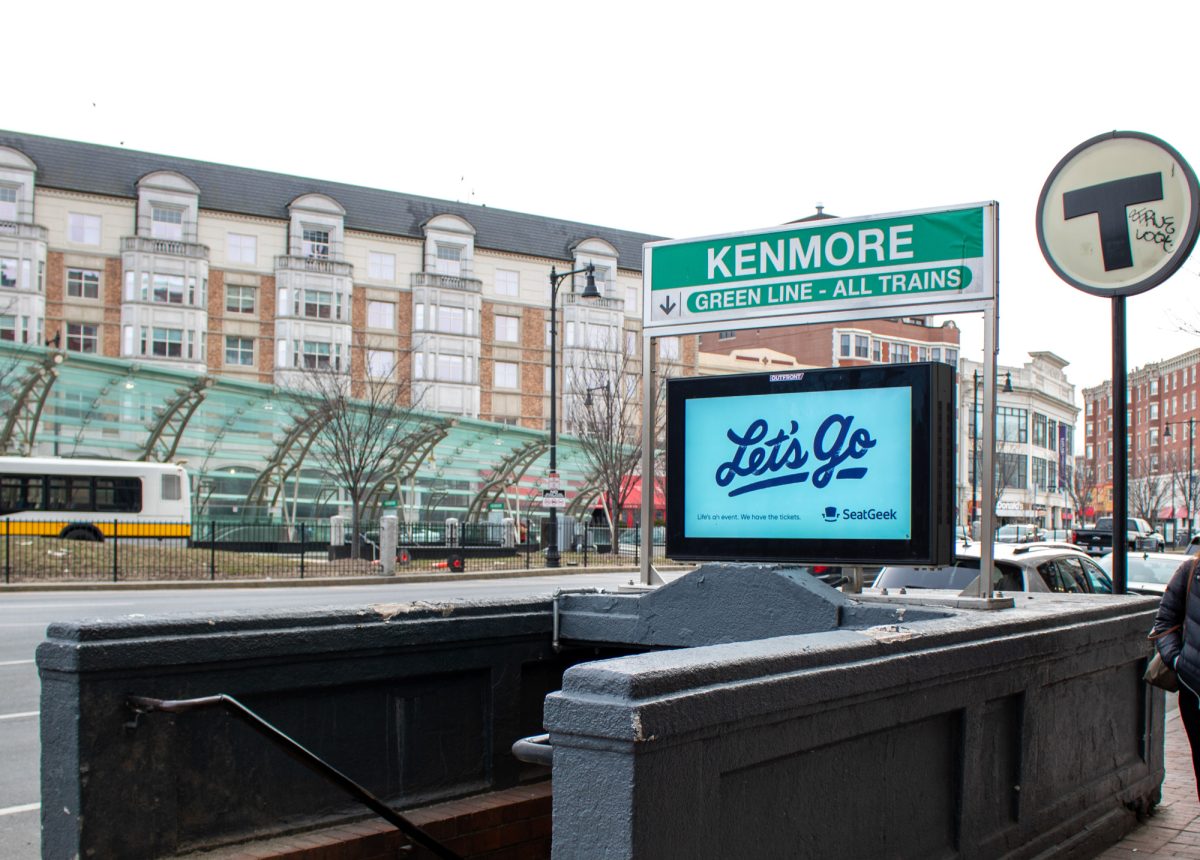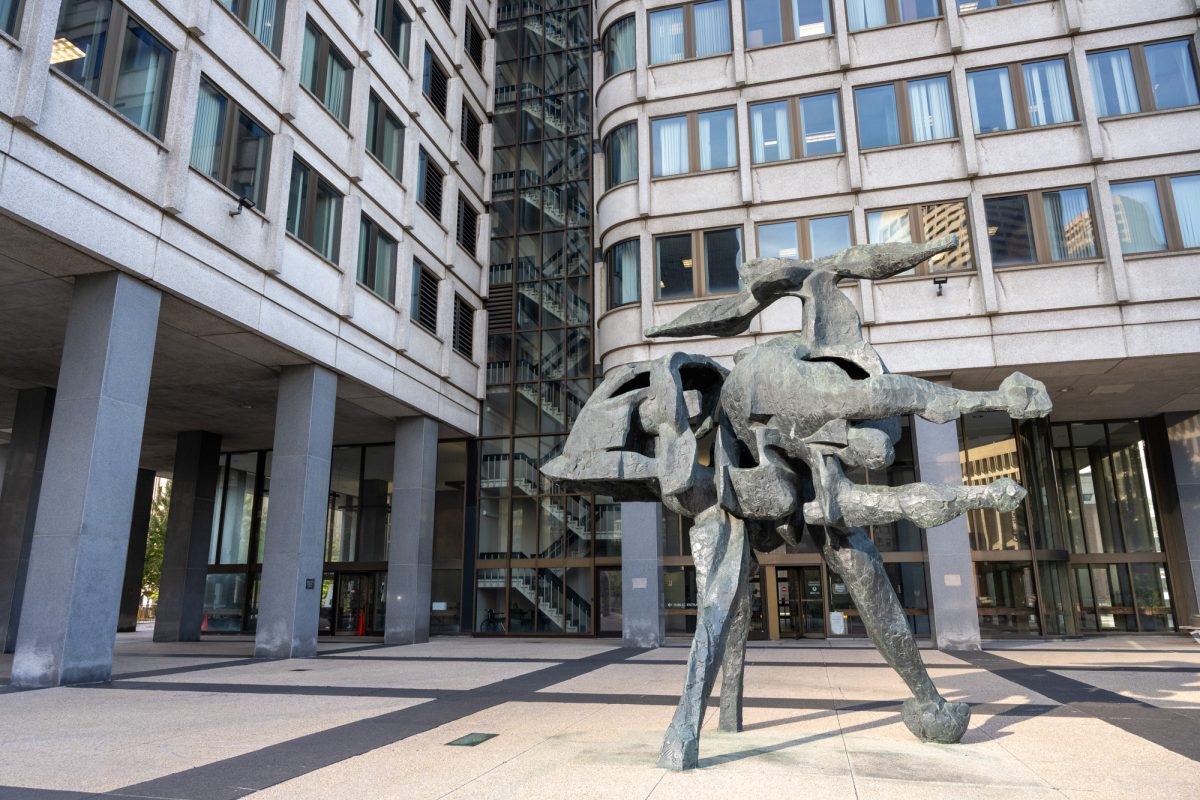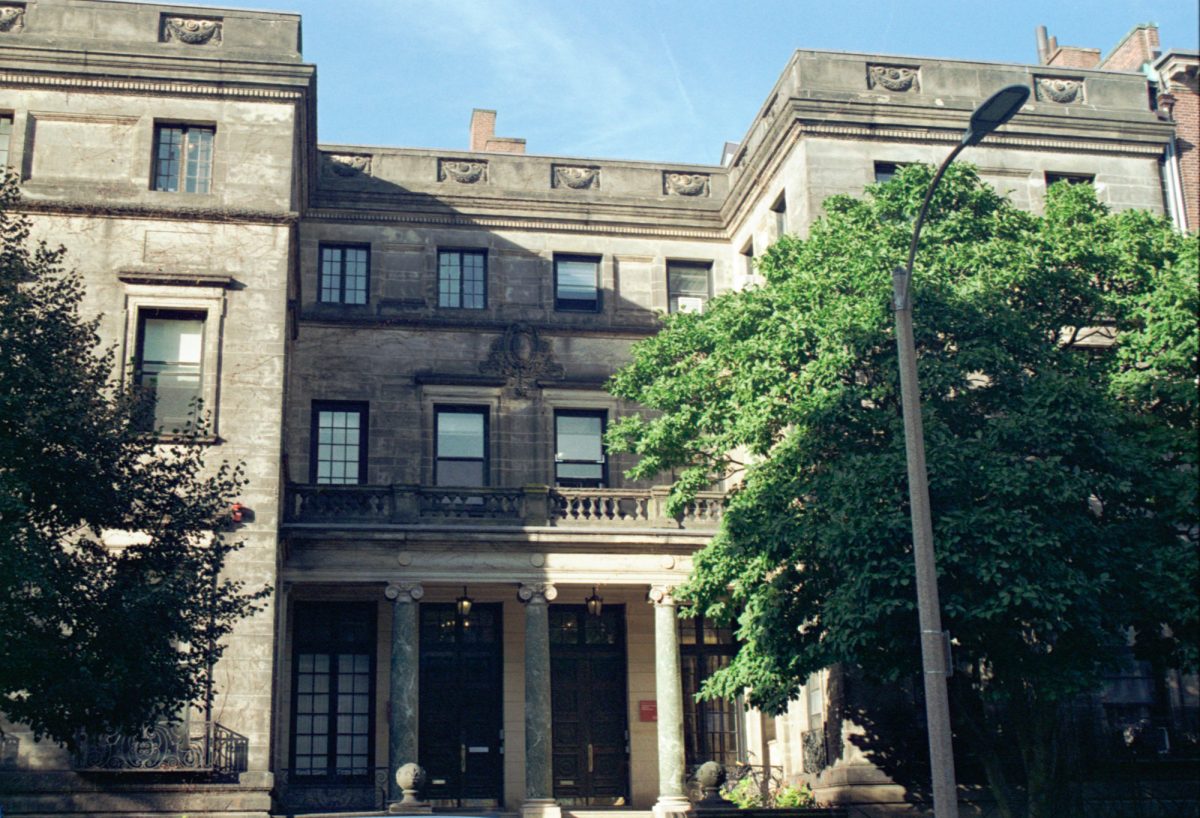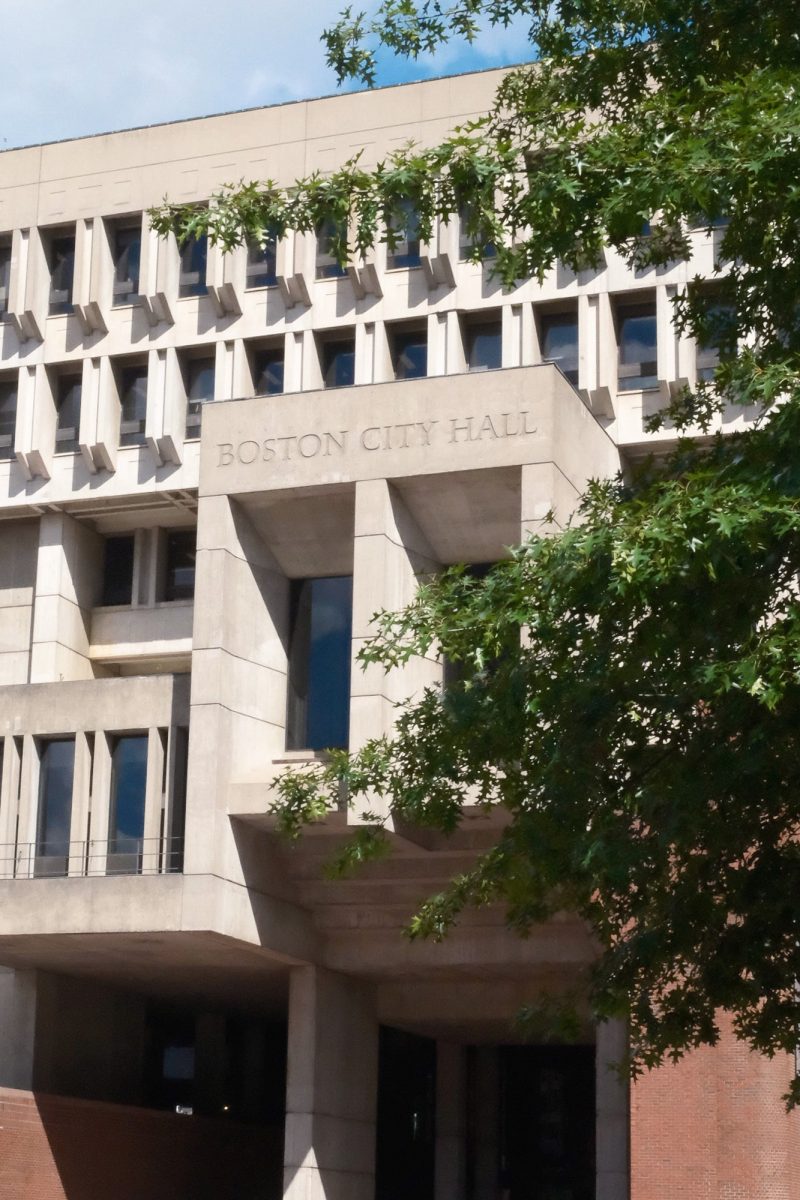Bay State Road is well known to be beautiful, but wow. Less than 200 ft. from Marciano Dining Hall, one home — or mansion, rather — seems frozen in time. A gleaming marble entryway, skyscraper ceilings, Victorian wallpaper and ornate banisters. This is luxury defined.
Actually, this is a Massachusetts Institute of Technology fraternity house. Phi Delta Theta, to be exact.
Currently, 25 of MIT’s 27 fraternity houses are in Boston — not in Cambridge with the rest of its campus. 12 of the houses are on or near Boston University soil. But why does the heart of MIT frat life beat on this side of the Charles River?
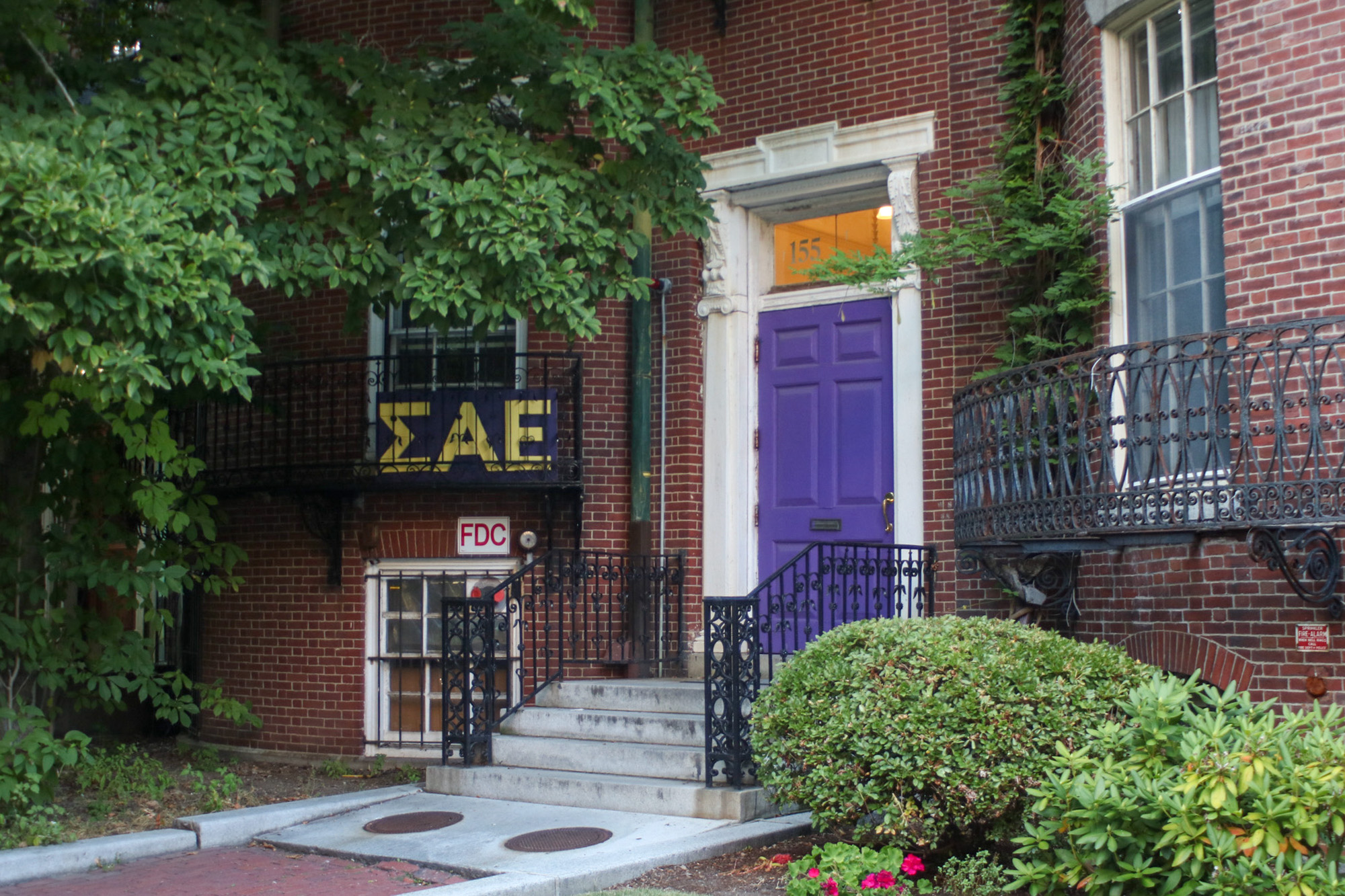
“I just always thought it was a similar situation to BU, where we’re not supposed to have any of our own frat houses on campus,” said Sierra Robison, a sophomore at BU. “I thought maybe [MIT] had the same rule. That’s why [their fraternities are] over here.”
Robison lives in a dorm on Bay State Road, right next to the MIT chapter of fraternity Sigma Alpha Epsilon. She said in the time she’s lived next to the frat, “they haven’t been that disruptive.”
She also said the architecture of these frat houses “wowed” her more than some of their parties she had attended. Her friend, sophomore Julianna Occhipinti, agreed.
“The infrastructure in there is so beautiful,” Occhipinti said. “They have these spiral staircases, the marble entrances. They have columns.”
Sophomore Mandy Donahoe only half-agreed.
“It is so weird partying at an MIT frat because we’re like, ‘Why am I partying next to a bookshelf?’” Donahoe said.
Some of these bookshelves are centuries old and impeccably maintained, according to the New England chapter of the Victorian Society, which aims to preserve 19th century heritage. In 2016, MIT’s chapter of the Chi Phi fraternity was awarded the Victorian Society’s Preservation Award — a recognition hardly given to college fraternities — for its maintenance of the John F. Andrew Back Bay Mansion.
But 100 or so years before Robison and her friends started at BU, MIT was known as Boston Tech, and its original campus was located near Copley Square. The “hybrid technical school/applied research institute” was founded in 1861 by William Barton Rogers, according to Eric Gilliam, a research and development history specialist.
Boston Tech had no dormitories at the time, according to the MIT Interfraternity Council. Thus, frats were born.
The demand for integrated social and living communities birthed the MIT chapters of Sigma Chi, Theta Xi and Delta Psi. These newly founded fraternities built their “houses” by renting out blocks of apartments in Back Bay, firmly planting MIT’s fraternity roots in Boston.
However, the city soon became over-cultivated.
By 1900, Boston’s population swelled, and space became scarce. Boston Tech found itself unable to accommodate its growing student population.
The institution’s pleas for more land were answered in 1911 by alumnus Coleman duPont. His donation of $500,000 dollars — equivalent to $16,000,000 dollars today — allowed Boston Tech to relocate to Cambridge in 1916, where it rechristened itself as Massachusetts Institute of Technology. The frats stayed put.
Rodrigo Garza Garcia, a junior at MIT and Rush chair for Phi Delta Theta, said he was originally hesitant to move into his fraternity’s house because it meant moving across the Charles River, a “20 to 25 minute walk” from MIT’s Cambridge campus. But, he soon realized some benefits.
“Being on the Boston side [of the river] is a plus,” Garza Garcia said. “There’s more things to do, more spots to eat, more people from different schools to run into.”
While he feels more distanced from his peers across the river than he would like to be, he said he enjoys the separation of school and home.
“Once you find your groove with your mode of transportation to get across, it’s never really like, ‘Oh, I’m missing out on that,’” Garza Garcia said.
For prospective members, Garza Garcia said fraternity vans are that mode of transportation. He said that some fraternities with houses far from campus, like Zeta Beta Tau in Brookline, use a van year-round to simplify transportation for the potential brothers.
“We get the vans so that we can take the freshmen we’re trying to rush from the campus to our house,” Garza Garcia said. “All the frats on this side of the river will do it just because it’s kind of hard to [rush] without [the vans].”
However, Robison said these white vans — with their respective fraternities’ Greek letters painted across the exteriors — look out of place on BU’s campus.
“You could say they don’t really match Bay State,” Robison said.
Garza Garcia is “proud” to be an MIT student. But if MIT’s 1916 move never occurred, he would have enjoyed attending Boston Tech, mainly to be on the Boston side of the Charles.
“If I could snap my fingers, yeah, I think it would be cool to have [MIT] on this side for sure,” Rodrigo said.

